What to Look For When Buying A Baseball Glove
Whether you are playing baseball for the first time or a Major League player, it is critical to find the best baseball glove to suit your positional needs, age and playing level. There are a lot of different factors to consider when selecting a glove and we will cover the basics in this buying guide.
Handedness
The first thing to consider may be the most obvious, but you will want to make sure that you are purchasing a glove for the correct hand. If you or your child is a right-handed thrower, you will want to buy a glove that goes on the left hand. If you or your child is a left-handed thrower, you will want to purchase a glove that goes on their right hand.
Webbing Style
Basket Web
Pitchers often used a basket web style glove so that they can conceal the ball when they are finding the correct grip for the next pitch. The basket web also offers greater flexibility than other web styles.
Trapeze Web
The trapeze web is perfect for players that only play in the outfield. It is the type of web that is made for the outfield because it creates a deep pocket to keep a ball trapped in the glove for when a player dives for a ball or runs into the fence.
I-Web
I-Web gloves are a popular web style for middle infielders. The firmness of the I allows for an easy transfer to the throwing hand since the ball doesn’t fall deep into the glove. The openings also allow dirt and debris to flow through the glove instead of getting trapped in the pocket of the glove.
H-Web
Third basemen and outfielders often choose an H-Web style glove. The extra reinforcement is good for hard line drives and the holes allow you to see through the glove when fielding fly balls and pop-ups.
Two-piece Web
The two-piece web is another web style that is used for pitchers that want to keep the ball concealed in their glove.
Size
Picking the correct size glove for your age and position is critical to selecting the right glove for your needs. Using a glove that is too large will slow you down and using one that is too small in the outfield will cost you some plays that you would make with an appropriately sized glove.
| Level | Age | Position | Size |
| T-Ball | 3 to 6 years old | All positions | 8.5″ to 10″ |
| Youth | 7 to 12 years old | 1st Base | 11.5″ – 12″ |
| Youth | 7 to 12 years old | Infield | 10.25″ – 12.25″ |
| Youth | 7 to 12 years old | Outfield | 11.5″ – 12.25″ |
| Adult | 12+ years old | 1st base | 12″ – 13″ |
| Adult | 12+ years old | Infield | 11.25″ – 12″ |
| Adult | 12+ years old | Outfield | 12″ – 12.75″ |
See our recommended youth glove options.
Position
A glove’s size and shape will vary depending on the position that the glove is intended.
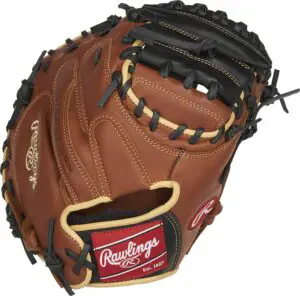 A catcher’s mitt is designed specifically to handle pitches from a pitcher. There is extra padding to protect hands against the added velocity that comes along with catching balls thrown by the pitcher.
A catcher’s mitt is designed specifically to handle pitches from a pitcher. There is extra padding to protect hands against the added velocity that comes along with catching balls thrown by the pitcher.
Catcher’s mitts are also shallow so the ball can be removed easily in the event that a runner is stealing second or third base. A shallower glove allows the ball to be removed more quickly in preparation for a throw.
As you will see the top of a catcher’s mitt is also flat that allows for catchers to easily scoop up balls in the dirt or block a pitch and keep in in front of the body.
One of the primary roles of a catcher is to provide a target for pitchers. The rounded shape of a catcher’s mitt makes for the perfect target for pitchers to throw to as well.
Baseball Catcher’s Mitt Sizing Guide
Choosing a catcher’s mitt that fits your hand perfectly based on the size of the mitt, age and level of baseball you play is very important. You will want to find a mitt that is neither too loose nor too tight because as a catcher you will be making a lot of quick movements with your hands. Use the chart below to find the correct catcher’s mitt size.
| Level | Age | Size |
| T-Ball | Under 7 | 29.5″ – 30″ |
| Youth | 8 to 10 years old | 30″ – 31″ |
| Youth | 11 to 13 years old | 30″ – 34.5″ |
| Adult | 14+ years old | 32″ – 34.5″ |
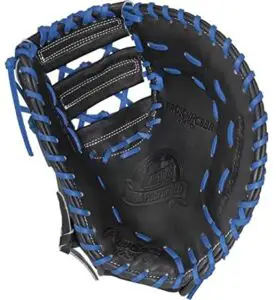 The first basemen’s mitt is different from other infielders’ gloves for two primary reasons.
The first basemen’s mitt is different from other infielders’ gloves for two primary reasons.
The first is that first basemen often have to scoop low throws out of the dirt. The shape of the glove is round and flat on one side to assist with the task of reaching down and snagging a ball on a short hop.
Secondly, first basemen rarely have to throw after they catch the ball so reducing the time transferring the ball from your mitt to your hand does not need to be one of the critical factors of the glove.
Because of this, the glove can have a deeper pocket than a middle infielder’s glove. This helps ensure that the ball will stay in the glove once the first baseman catches the ball at first base.
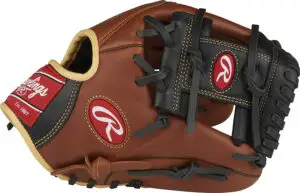 Middle infielders need to move their glove quickly in order to be an effective defensive player. A smaller glove with shallow pocket depth will help a middle infielder find the ball quickly with their throwing hand. A glove that has an h-web or I-web is also ideal for infielders because they are a little lighter than gloves with a full pocket.
Middle infielders need to move their glove quickly in order to be an effective defensive player. A smaller glove with shallow pocket depth will help a middle infielder find the ball quickly with their throwing hand. A glove that has an h-web or I-web is also ideal for infielders because they are a little lighter than gloves with a full pocket.
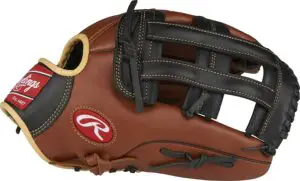 Contrary to infielder’s gloves, outfielders have longer gloves that have a deeper pocket. A longer glove type helps outfielders reach balls that they may reach with a shorter glove. Deeper pockets also help the ball find a safe spot inside the glove where it is not in danger of popping out.
Contrary to infielder’s gloves, outfielders have longer gloves that have a deeper pocket. A longer glove type helps outfielders reach balls that they may reach with a shorter glove. Deeper pockets also help the ball find a safe spot inside the glove where it is not in danger of popping out.
Baseball Glove Material Types
Full-Grain Leather
Full-grain leather are hides that haven’t been manipulated to remove natural marks or imperfections. This type of leather is very durable but it is also stiffer and heavier than other types of leather. Gloves made with full-grain leather take longer to break in than other types of gloves.
Kipskin
Kipskin or Kip leather is a very soft type of cowhide. These types of gloves are lighter and easier to break in tan full grain leather gloves. Kip leather gloves tend to be more costly and are considered to be premium quality gloves.
Cowhide Leather
Many standard baseball gloves are made out of cowhide. Cowhide is a medium weight material that breaks in easily but is not as durable as steer hide or full-grain leather.
Steerhide
Steerhide is taken from the back shoulder of adult steers. Steerhide is an incredibly tough material that is difficult to break in. The main benefit of steer hide is that it is extremely durable.

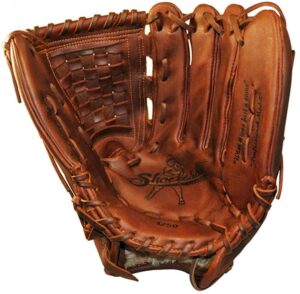
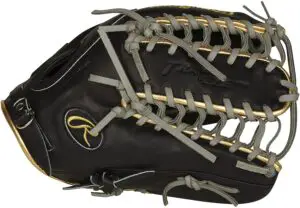
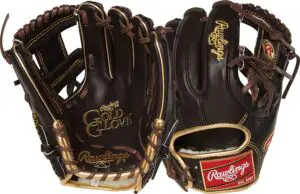
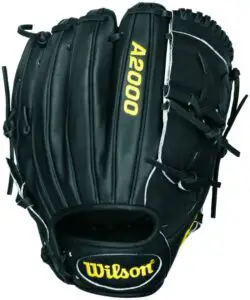
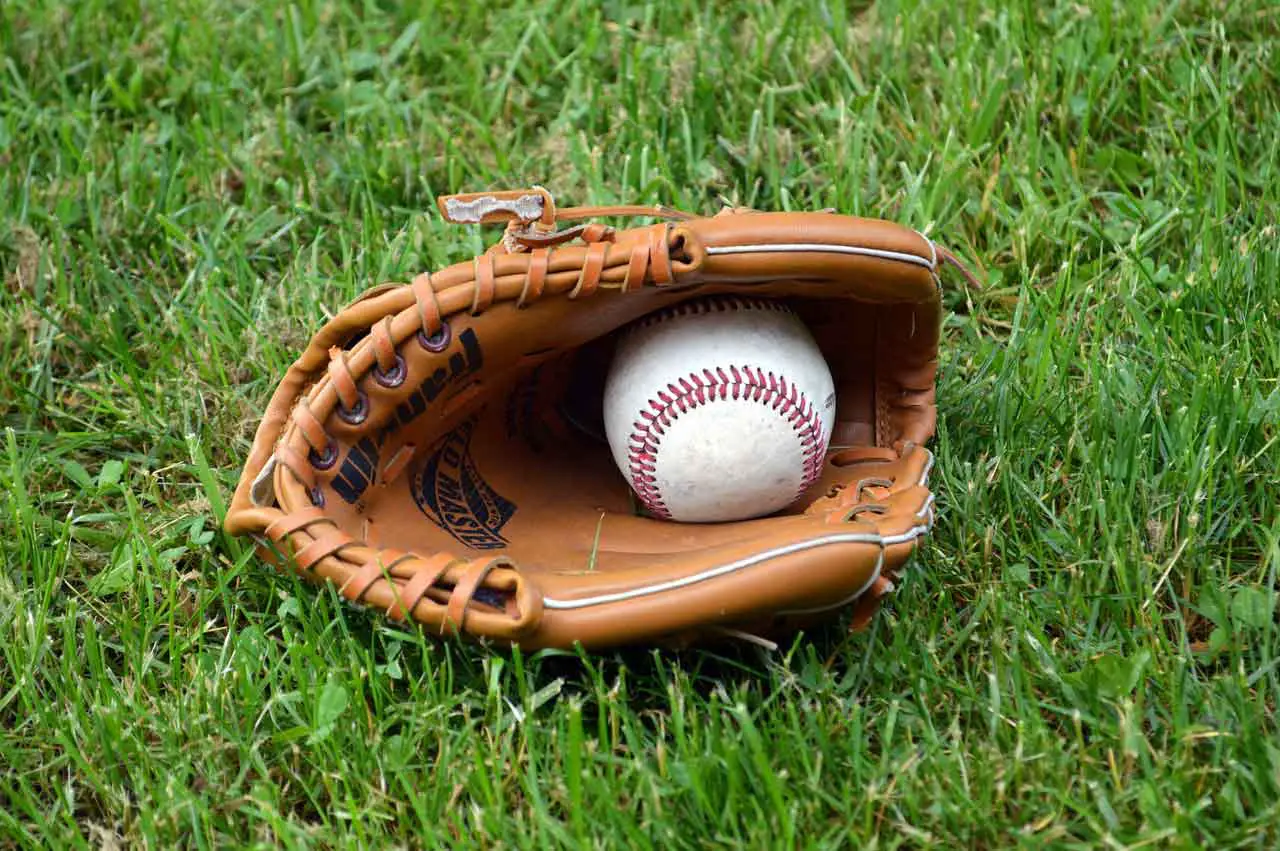
Blackhatlinks
witryvewg dnivm fsgltnv nyxu hqgdkxoqisqkrgo